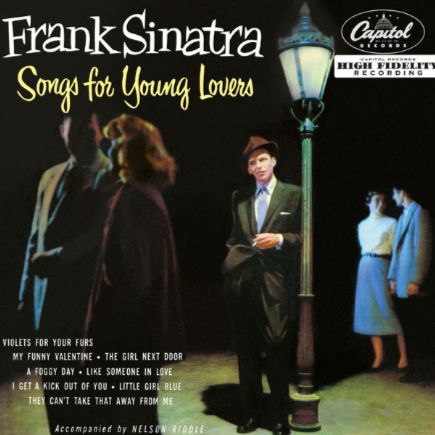My Funny Valentine: l’ironie tendre d’un amour sans fard
Créée en 1937 pour la comédie musicale Babes in Arms de Richard Rodgers et Lorenz Hart, My Funny Valentine était à l’origine un simple numéro de théâtre interprété par la jeune star Mitzi Green. Le spectacle connut un succès notable à Broadway avec près de 300 représentations, mais c’est bien la chanson qui allait traverser les décennies pour devenir l’un des standards les plus enregistrés du jazz (plus de 1300 versions recensées, par plus de 600 artistes).
Ballade mélancolique à la fois douce et désarmante, My Funny Valentine séduit par l’ambiguïté de son texte: Lorenz Hart y brosse le portrait d’un être imparfait, voire maladroit, mais profondément aimé pour ce qu’il est. Le charme du morceau réside dans ce mélange de tendresse, d’ironie et d’authenticité, porté par une mélodie élégante et légèrement mélancolique. Les paroles, volontairement neutres, permettent une interprétation universelle, indépendante du genre ou du contexte.
L’intimisme raffiné de Frank Sinatra
Enregistrée les 5 et 6 novembre 1953 à Hollywood, la version de My Funny Valentine proposée par Frank Sinatra pour l’album Songs for Young Lovers marque un tournant décisif dans son évolution artistique. Portée par un arrangement élégant de George Siravo et un orchestre dirigé par Nelson Riddle, cette interprétation inaugure le style plus mature, plus nuancé, qui définira la période Capitol du chanteur.
Sinatra aborde My Funny Valentine avec une retenue expressive remarquable. Sa voix, alors dans une phase de pleine évolution, combine chaleur, précision et une fragilité maîtrisée. L’orchestration, discrète mais sophistiquée, laisse la voix occuper le premier plan. Siravo et Riddle construisent un écrin harmonique où les cordes murmurent plus qu’elles ne soutiennent, créant un décor feutré qui renforce la dimension introspective de la chanson.
My Funny Valentine: la tierna ironía de un amor sin artificios
Creada en 1937 para el musical Babes in Arms de Richard Rodgers y Lorenz Hart, My Funny Valentine fue en sus orígenes un simple número teatral interpretado por la joven estrella Mitzi Green. El espectáculo tuvo un éxito notable en Broadway, con casi 300 representaciones, pero fue la canción la que atravesó las décadas hasta convertirse en uno de los estándares más versionados del jazz (más de 1300 versiones registradas por más de 600 artistas).
Balada melancólica, a la vez suave y desarmante, My Funny Valentine cautiva por la ambigüedad de su letra: Lorenz Hart traza el retrato de un ser imperfecto, incluso torpe, pero profundamente amado por lo que es. El encanto del tema reside en esa mezcla de ternura, ironía y autenticidad, sostenida por una melodía elegante y levemente melancólica. La neutralidad deliberada de la letra permite una interpretación universal, independiente del género o del contexto.
El intimismo refinado de Frank Sinatra
Grabada los días 5 y 6 de noviembre de 1953 en Hollywood, la versión de My Funny Valentine ofrecida por Frank Sinatra para el álbum Songs for Young Lovers marca un giro decisivo en su evolución artística. Sostenida por un arreglo elegante de George Siravo y una orquesta dirigida por Nelson Riddle, esta interpretación inaugura el estilo más maduro y matizado que definirá el período Capitol del cantante.
Sinatra aborda My Funny Valentine con una contención expresiva notable. Su voz, entonces en plena evolución, combina calidez, precisión y una fragilidad controlada. La orquestación, discreta pero sofisticada, deja que la voz ocupe el primer plano. Siravo y Riddle construyen un marco armónico en el que las cuerdas susurran más que sostienen, creando un decorado atenuado que refuerza la dimensión introspectiva de la canción.
My Funny Valentine: l’ironia delicata di un amore senza maschere
Creata nel 1937 per il musical Babes in Arms di Richard Rodgers e Lorenz Hart, My Funny Valentine era inizialmente un semplice numero teatrale interpretato dalla giovane star Mitzi Green. Lo spettacolo ottenne un notevole successo a Broadway, con quasi 300 repliche, ma fu la canzone a sopravvivere ai decenni, diventando uno degli standard jazz più registrati (oltre 1300 versioni da parte di più di 600 artisti).
Ballata malinconica, al tempo stesso dolce e disarmante, My Funny Valentine affascina per l’ambiguità del suo testo: Lorenz Hart vi traccia il ritratto di un essere imperfetto, persino goffo, ma profondamente amato per ciò che è. Il fascino del brano risiede in questo intreccio di tenerezza, ironia e autenticità, sorretto da una melodia elegante e lievemente malinconica. Il testo volutamente neutro consente un’interpretazione universale, indipendente dal genere o dal contesto.
L’intimismo raffinato di Frank Sinatra
Registrata il 5 e 6 novembre 1953 a Hollywood, la versione di My Funny Valentine proposta da Frank Sinatra per l’album Songs for Young Lovers segna una svolta decisiva nella sua evoluzione artistica. Sostenuta da un elegante arrangiamento di George Siravo e da un’orchestra diretta da Nelson Riddle, questa interpretazione inaugura lo stile più maturo e sfumato che definirà il periodo Capitol del cantante.
Sinatra affronta My Funny Valentine con una notevole misura espressiva. La sua voce, allora in piena trasformazione, combina calore, precisione e una fragilità controllata. L’orchestrazione, discreta ma sofisticata, lascia che la voce occupi il primo piano. Siravo e Riddle costruiscono un contesto armonico in cui gli archi sussurrano più che sostenere, creando un ambiente ovattato che rafforza la dimensione introspettiva del brano.
My Funny Valentine: the gentle irony of an unvarnished love
Written in 1937 for the musical Babes in Arms by Richard Rodgers and Lorenz Hart, My Funny Valentine was originally just a theater number performed by young star Mitzi Green. The show enjoyed considerable success on Broadway, with nearly 300 performances, but it was the song that would endure through the decades, becoming one of the most recorded jazz standards—over 1300 known versions by more than 600 artists.
A melancholic ballad that is both tender and disarming, My Funny Valentine captivates with the ambiguity of its lyrics: Lorenz Hart paints the portrait of an imperfect, even awkward, person who is deeply loved just as they are. The charm of the piece lies in this blend of tenderness, irony, and authenticity, carried by an elegant, slightly melancholic melody. The deliberately neutral lyrics allow for a universal interpretation, regardless of gender or context.
Frank Sinatra’s refined intimacy
Recorded on November 5 and 6, 1953, in Hollywood, Frank Sinatra’s version of My Funny Valentine for the album Songs for Young Lovers marks a decisive turning point in his artistic evolution. Supported by an elegant arrangement by George Siravo and an orchestra conducted by Nelson Riddle, this interpretation inaugurates the more mature, nuanced style that would define the singer’s Capitol period.
Sinatra approaches My Funny Valentine with remarkable expressive restraint. His voice, then in a phase of full development, combines warmth, precision, and a controlled fragility. The orchestration, discreet yet sophisticated, allows the voice to dominate the foreground. Siravo and Riddle craft a harmonic setting in which the strings whisper rather than support, creating a hushed atmosphere that enhances the song’s introspective character.


